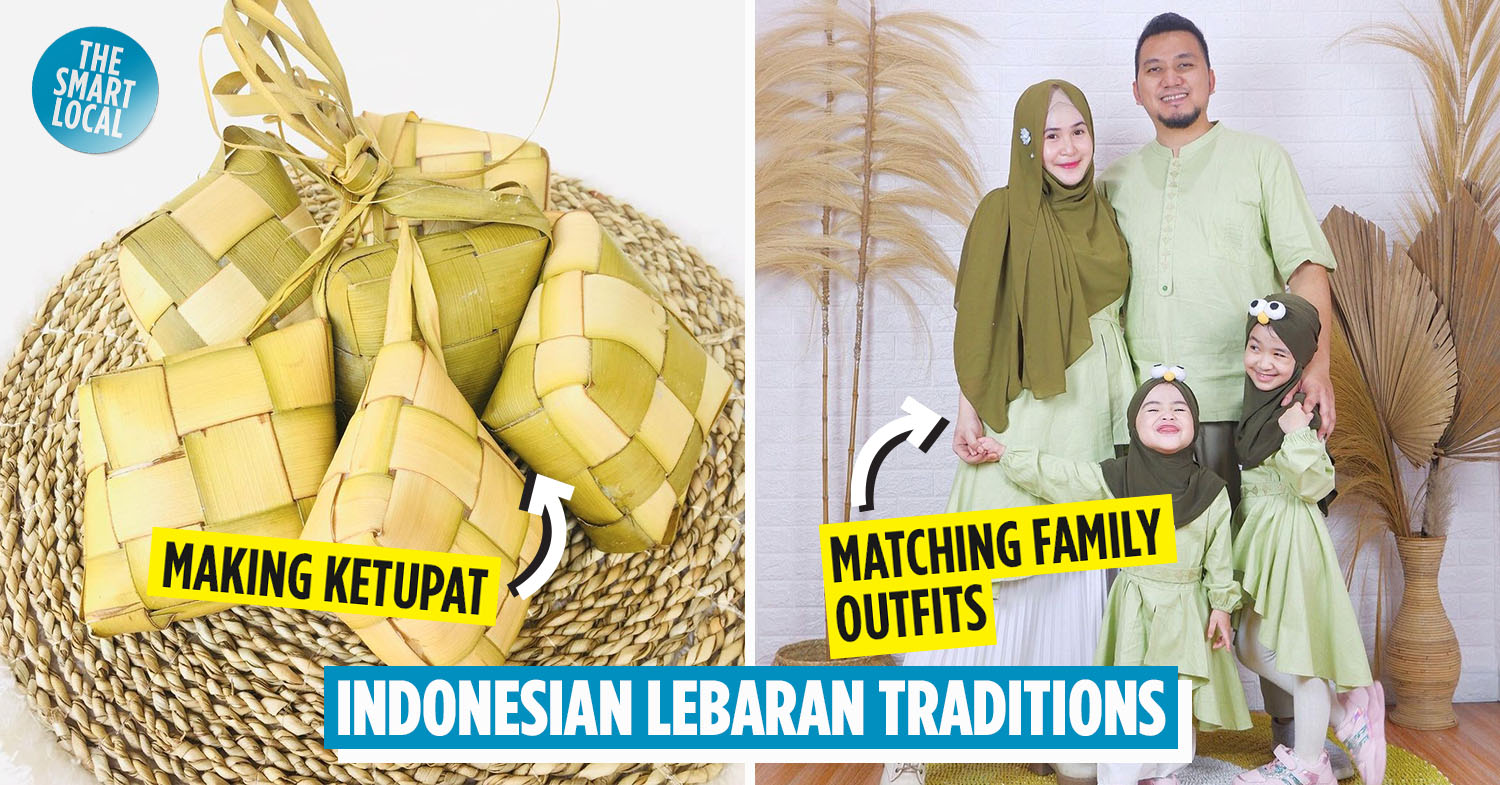Indonesian Lebaran traditions
Though this year’s Lebaran or Hari Raya Idulfitri (Eid-ul-Fitr) will be different from usual once again, it’s still a time of festivities where Muslims all over the country celebrate with their loved ones – be it through a small family get-together or over a Zoom call.
Like any major holiday, Lebaran is full of traditions and customs often taken for granted, but it’s worth it to understand the significance of each tradition to make the holiday more meaningful and make sure we do everything right on the big day.
We’ve summed up everything you need to know about Indonesian Lebaran traditions and customs so that you can appreciate each tradition more and avoid embarrassing yourself out of ignorance in front of your relatives – in person or online.
1. Mudik – visiting one’s family in their hometown
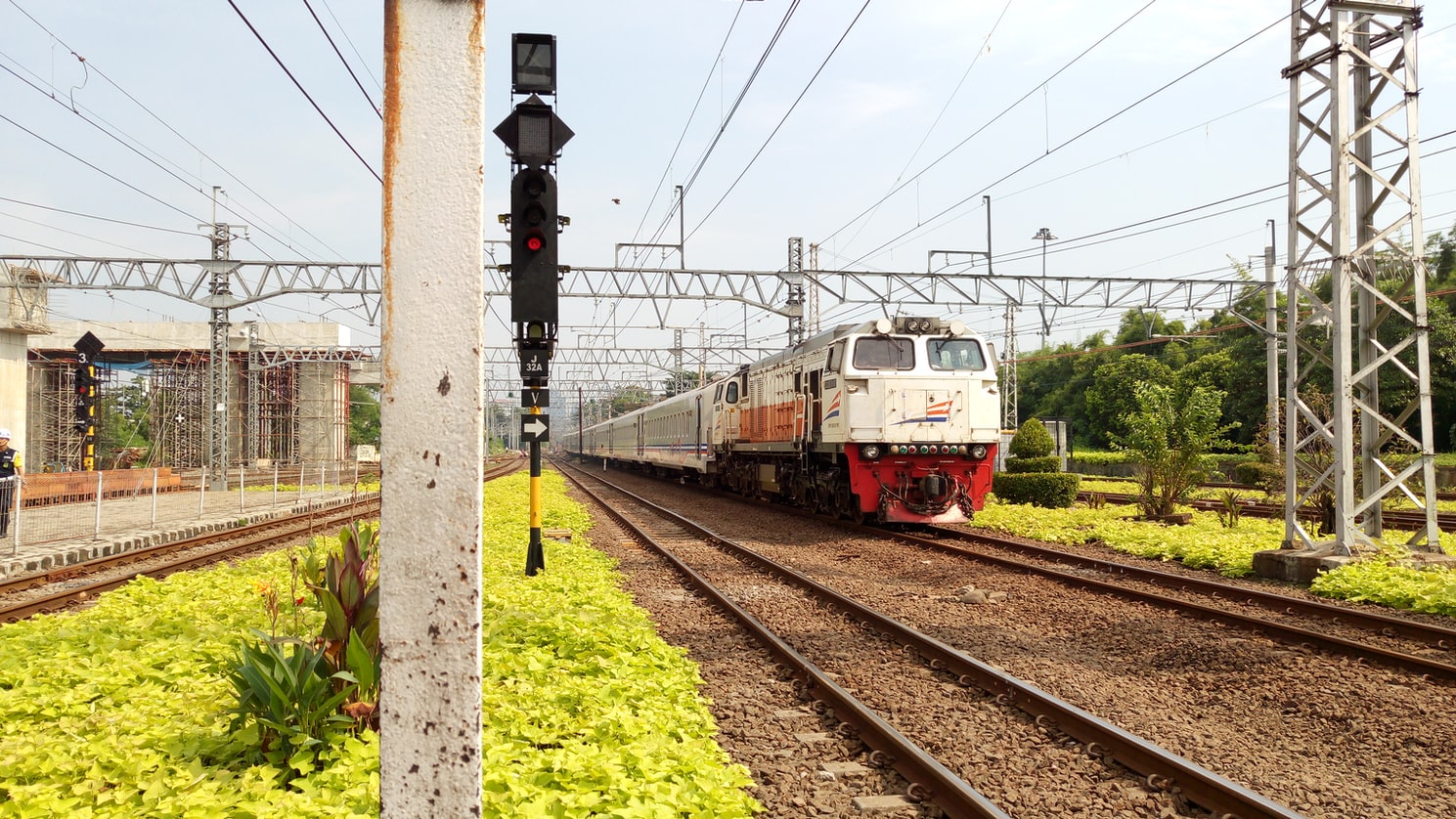
Image credit: Fachry Aiko/Unsplash
The essence of Idulfitri in Indonesia, mudik refers to the homecoming trips taken by people – especially those who live and work in big cities – to see their families for a major holiday.
Ahead of Lebaran, people usually make their way to their hometowns using either public transport such as airplanes and trains or private vehicles, with thousands going as far as travelling on motorcycles between provinces. Understandably, congestion and travel delays are common during this period, and public transport operators such as the Indonesian Railway Company and airlines often provide extra trips to meet the demand.
This year, the government has once again banned mudik to prevent the spread of COVID-19, and while it’s difficult to not be able to see our loved ones, thankfully technology has allowed us to remain in touch with them, with many scheduling a Zoom call with relatives over Lebaran.
2. Wearing one’s newest or best clothes
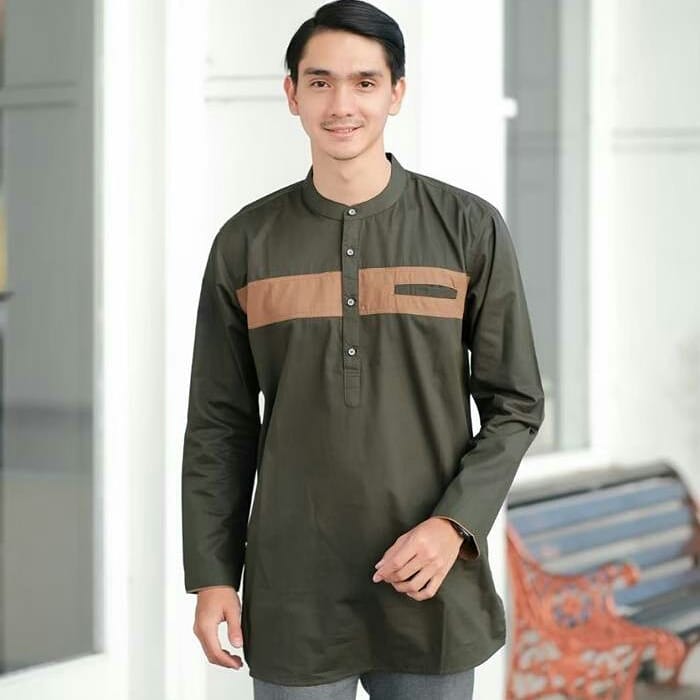
Image credit: @edkashop.id
Given its religious importance, Muslims are greatly encouraged to don their best attire on Idulfitri, and for many it means buying new clothes to be worn on the holiday – which serves as a great excuse to shop, especially with the rise of e-commerce sites such as Tokopedia.
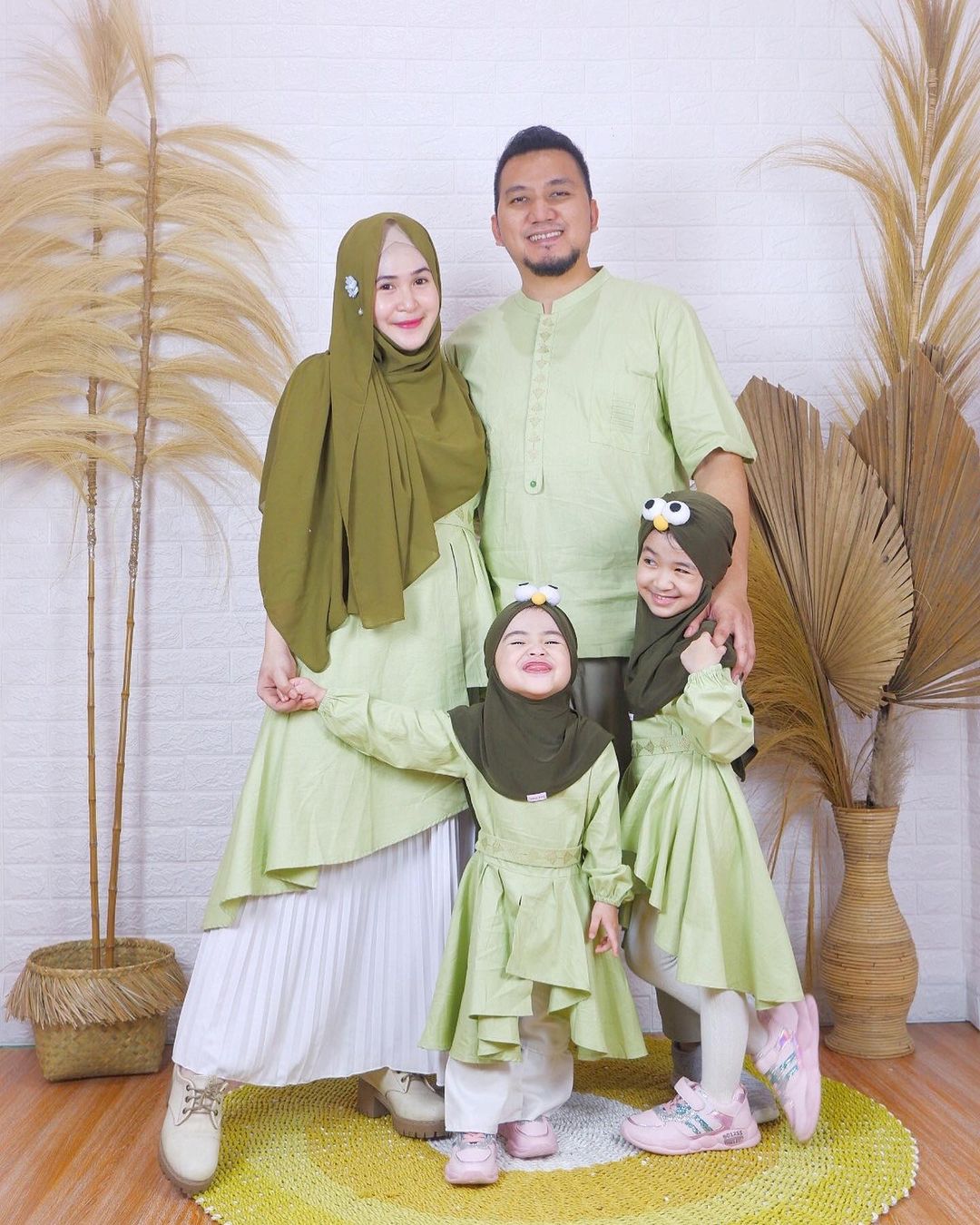
Families often opt to wear matching outfits for Lebaran
Image credit: @notsominime.id
Many families opt to wear matching outfits for Lebaran, especially for family photo sessions after the morning Eid prayer. Celebrities in particular will take to social media to share photos of themselves and their families wearing matching outfits, making headlines with their quirky attire and photoshoots.
Due to the high demand for new clothes and fabrics on Lebaran, textile markets such as Tanah Abang in Central Jakarta – the largest textile market in Southeast Asia – are usually jammed during Ramadan, with tailors and clothiers from all over the country flocking to get the materials needed for their businesses.
3. Asking one another for forgiveness
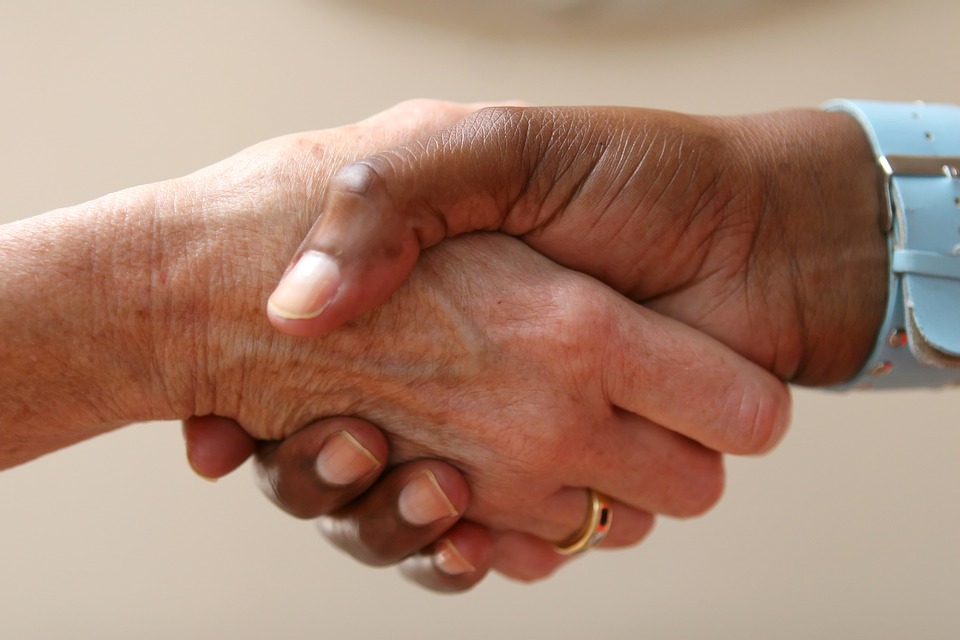
Image credit: Shutterbug75/Pixabay
Muslims believe that one is born anew and free of all sins on Idulfitri, and as such Lebaran is considered the moment to start fresh by asking for forgiveness for past mistakes from one another.
A common phrase often heard on Lebaran is “mohon maaf lahir dan batin”, which literally means “please forgive my body and soul”, signifying one’s desire to be forgiven for any physical and emotional wrongdoings that may have occurred. This is usually prefaced by the Arabic phrase “minal ‘aidin wal-faizin”, which means “may we be among the people who triumph over the struggle [of Ramadan]”.
4. Sungkeman – asking for blessings from elders

Image credit: @meutiarnlhq
Another uniquely Indonesian Lebaran tradition – especially among the Javanese – is sungkeman, where people ask for blessings and forgiveness from their grandparents, parents and other family elders.
Upon returning home after the morning Eid prayer, elders will sit on a chair while youngsters will kneel before them and kiss their hands while saying “mohon maaf lahir dan batin”. This tradition symbolizes humility and the importance of honoring older family members, especially one’s parents and grandparents.
5. Making ketupat – traditional rice cake
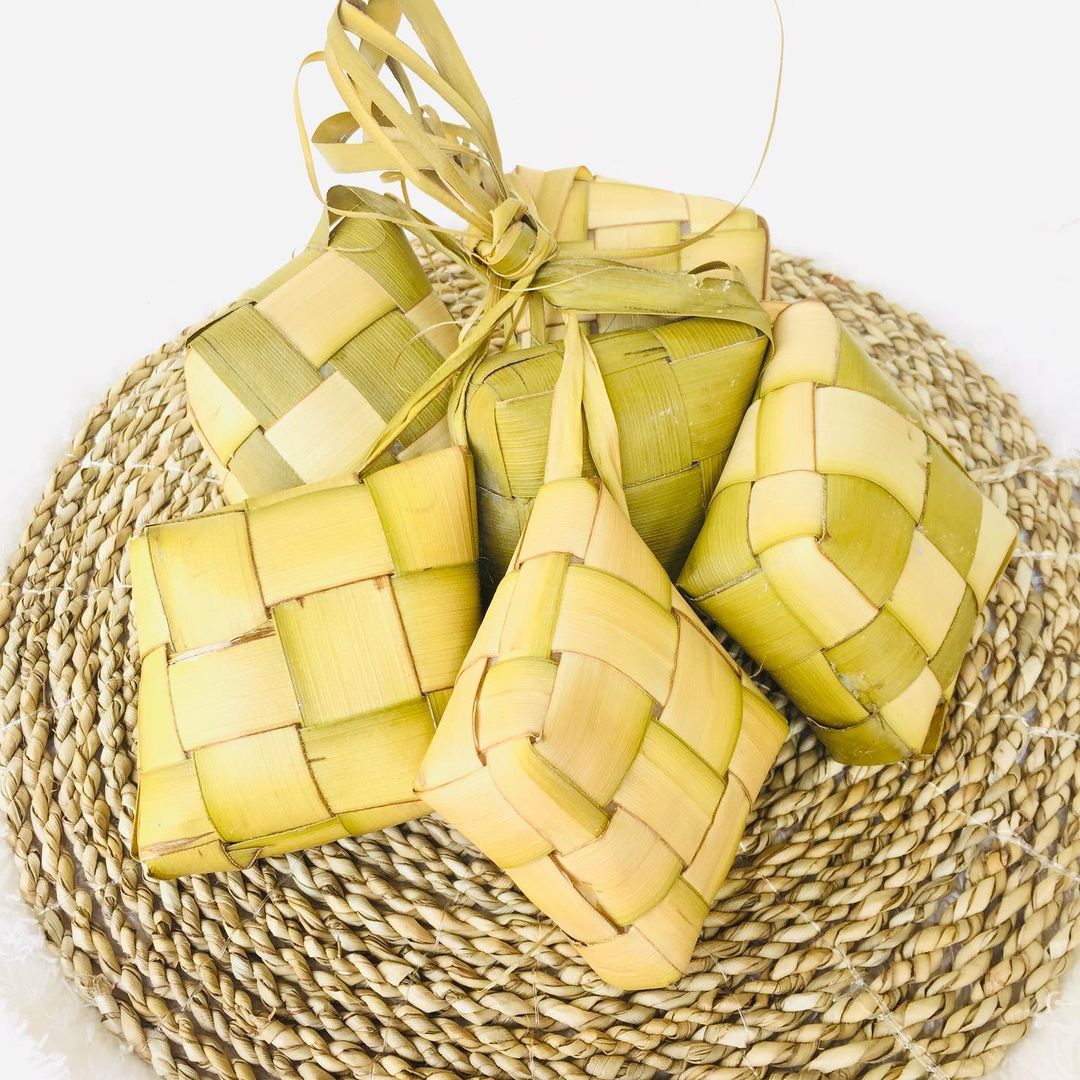
Image credit: @kitchen.claraa
A staple at every Lebaran celebration in Indonesia, ketupat is a rice cake wrapped in a diamond-shaped palm leaf pouch. The crossed weaving of palm leaves is believed to symbolize sins and wrongdoings, while the white rice cake inside symbolizes purity.
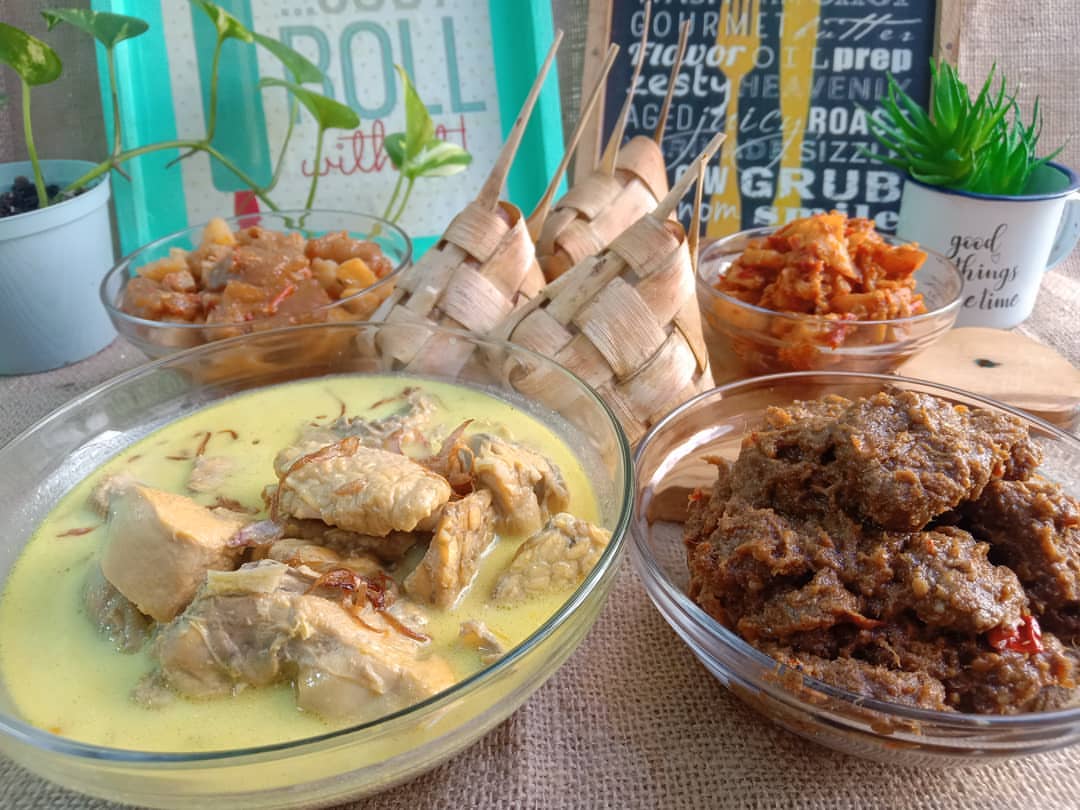
Image credit: @nofri_mayantoko
Traditionally, ketupat is served with beef rendang, opor ayam or yellow chicken curry, sayur labu or chayote stew, and sambal goreng hati or beef liver sambal. In some places – most notably in parts of Java, ketupat is served six days after Idulfitri, an occasion commonly known as Lebaran Ketupat.
Making palm leaf pouches for ketupat is quite time-consuming, so in recent times most people opt to buy ready-to-use ketupat pouches in traditional markets, with street vendors selling handmade ketupat pouches being a common sight in the days leading up to Lebaran.
6. Visiting friends and neighbors
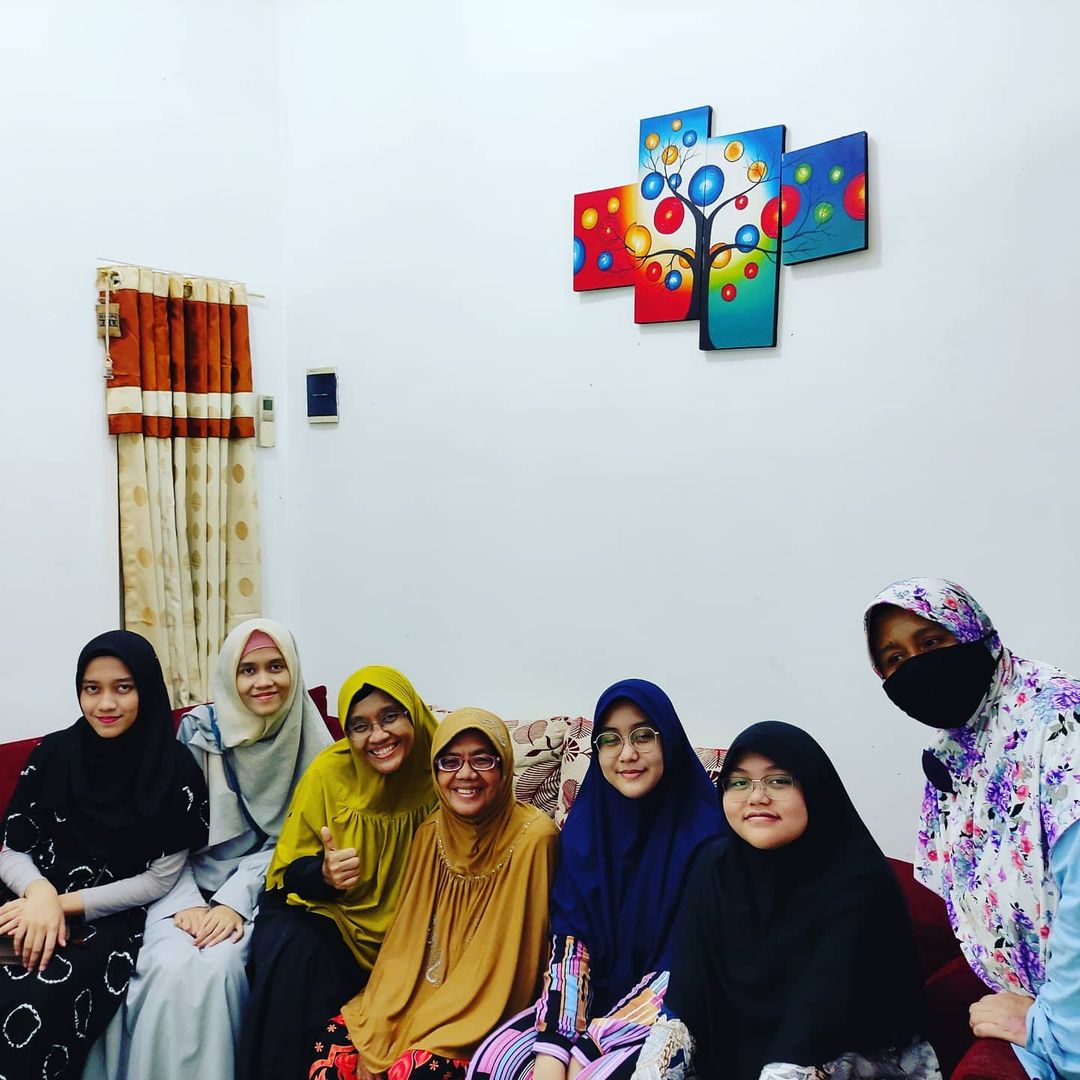
Image credit: @yudhantilestari
After sungkeman, it is customary to go out and visit one’s neighbors to wish them a happy Idulfitri as well as asking for forgiveness. On this occasion, hosts will often serve various snacks commonly associated with Lebaran, such as nastar or pineapple tarts and putri salju or icing sugar-coated cookies.
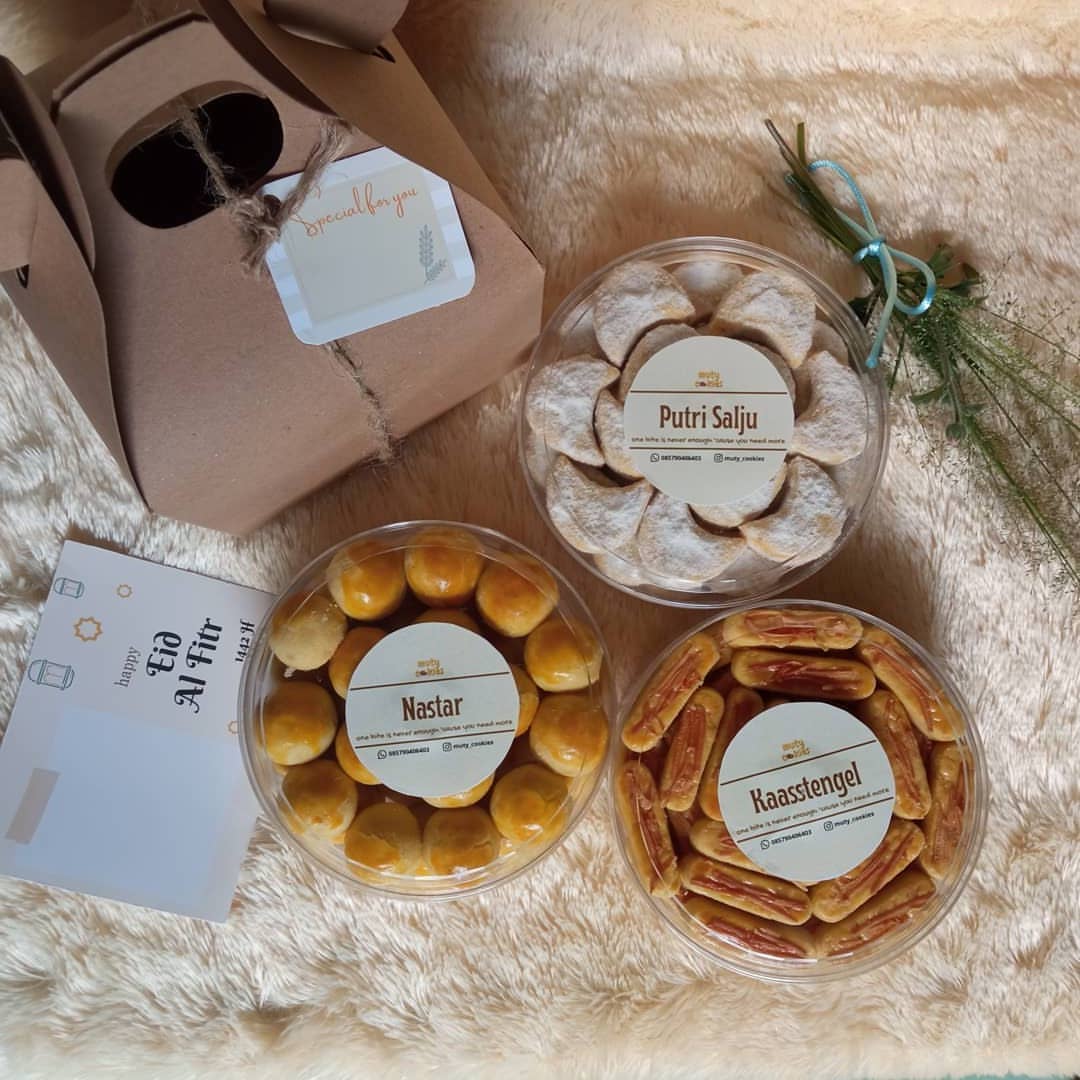
Cookies often traditionally served to guests on Lebaran
Image credit: @muty_cookies
While this tradition is dying down in major cities such as Jakarta, those in smaller towns still spare their time to visit multiple neighbors a day on Lebaran to strengthen silaturahmi, or kinship, making Lebaran in small towns generally more festive.
7. Sending parcels and hampers
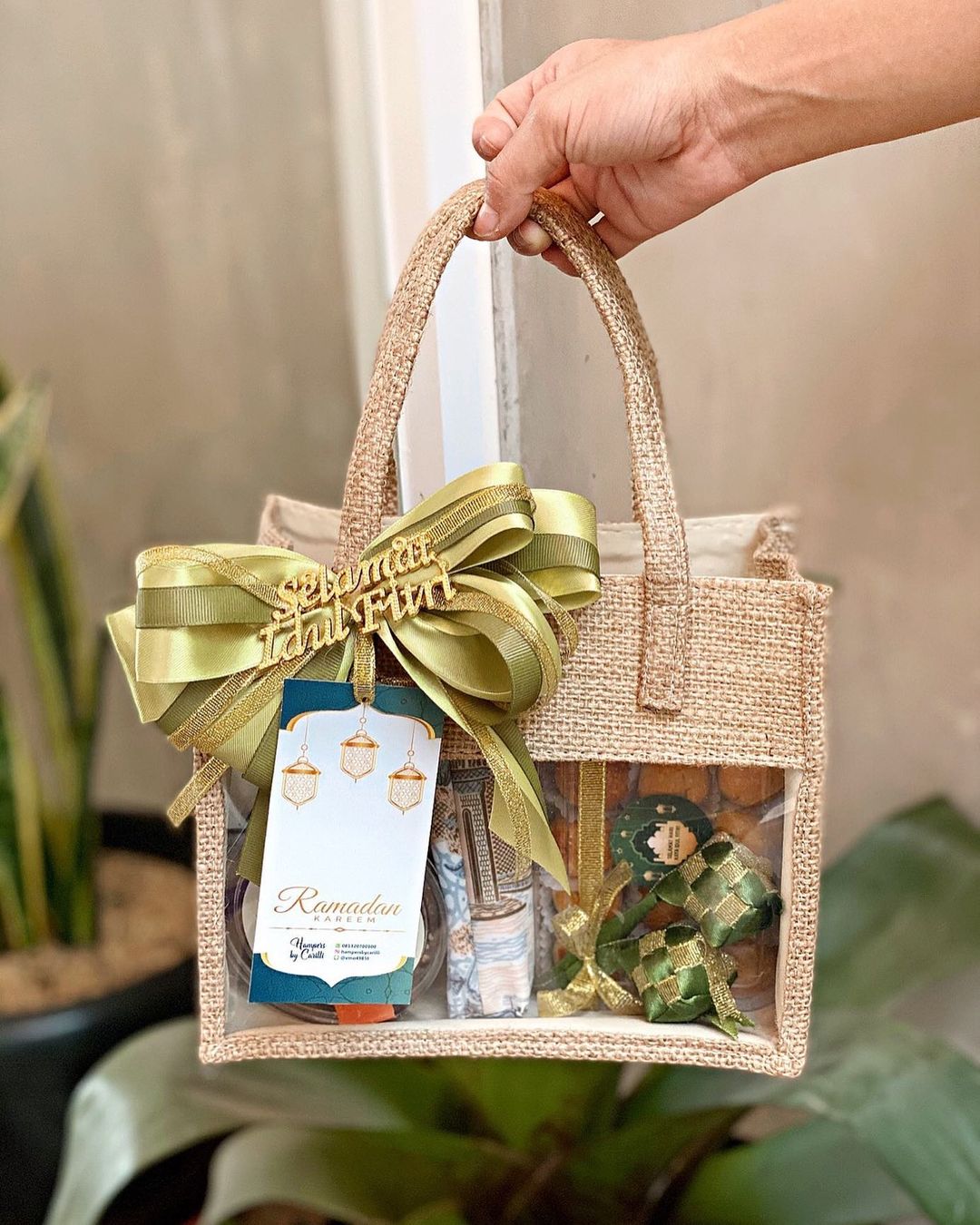
Image credit: @keepyourbouquet
It’s impossible to visit everyone on Idulfitri, and this is where Lebaran parcels and hampers come in handy. With the rising popularity of online shopping, sending parcels and hampers is becoming increasingly common, and they come in all shapes and sizes.
Traditionally, a parcel consists of a simple wicker basket filled with various store-bought items, usually snacks and drinks. In recent years, it has evolved into a modern hamper consisting of an artisan box or bag with specially made items, usually food such as cake and cookies.
In addition, parcels of basic necessities including rice, cooking oil, and soap are often distributed to the less fortunate as part of Lebaran alms and donations, usually by mosques and charitable organizations.
8. Giving and receiving tunjangan hari raya, or holiday money
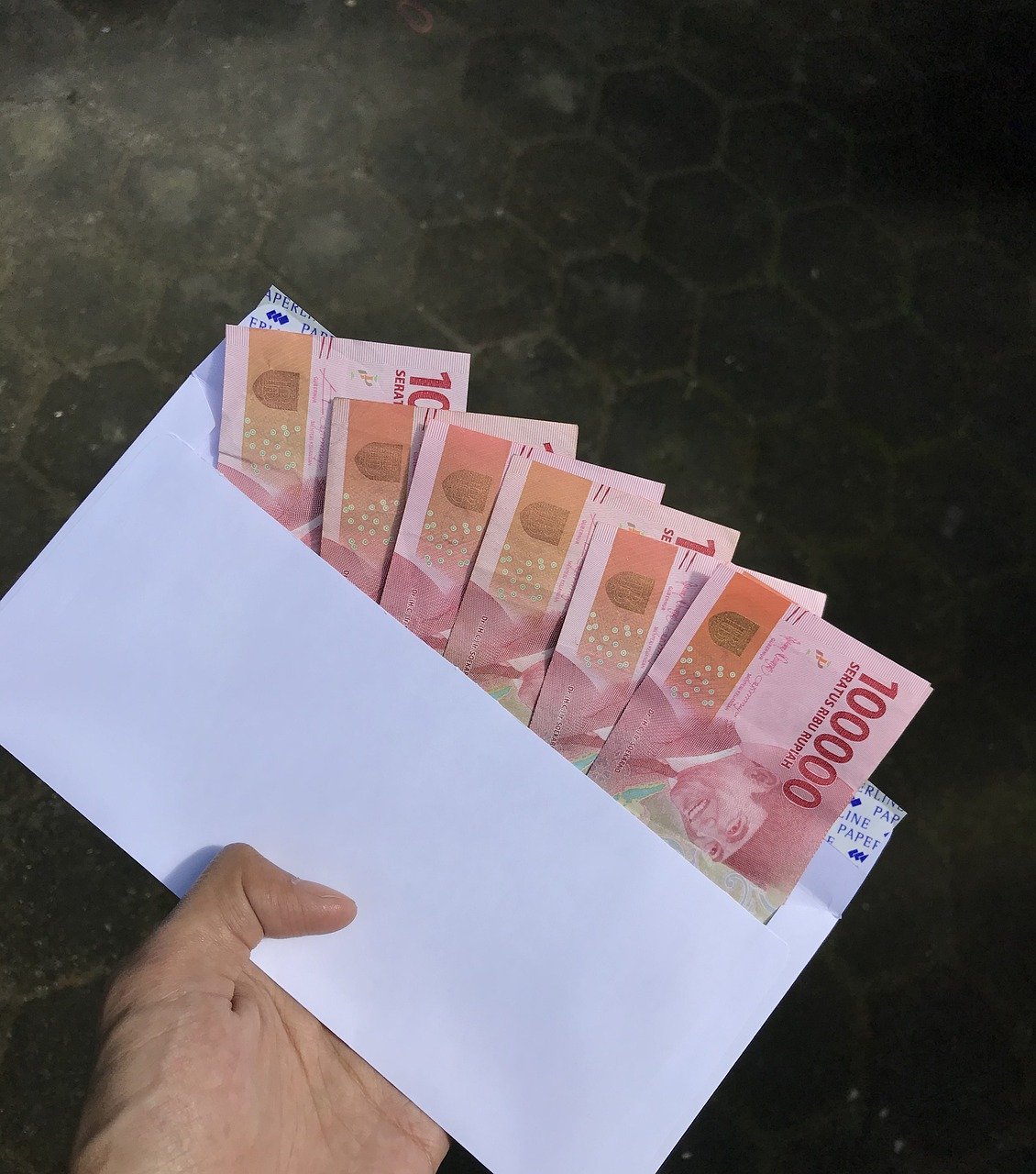
Image credit: Eko Anug/Pixabay
THR, which stands for tunjangan hari raya or holiday allowance, originally refers to legally mandated holiday bonuses given by employers to their employees. However, the term is also used to refer to money given to younger relatives and neighbors on Idulfitri, similar to ang bao on Chinese New Year.
After sungkeman, adults – especially married couples – will give small amounts of money, usually wrapped in colorful envelopes, to their younger relatives. This tradition is so prominent that banks will open special counters that provide smaller denominations several days before Lebaran.
Indonesian Lebaran traditions
While this year’s Lebaran will undoubtedly be different as it takes place amid the COVID-19 pandemic, the holiday’s traditions and customs still have a special place in the hearts of Indonesian Muslims.
Even with restrictions in place, it’s still a time of celebration after a full month of fasting, and technology has allowed us to maintain these traditions with some adjustments to ensure a joyous occasion.
More Indonesian guides:
Cover image adapted from @kitchen.claraa and @notsominime.id
Enjoying The Smart Local Indonesia? Follow us on Facebook, Twitter, Telegram, and Instagram for more stories like this. If you have a story to share, email us at [email protected].
